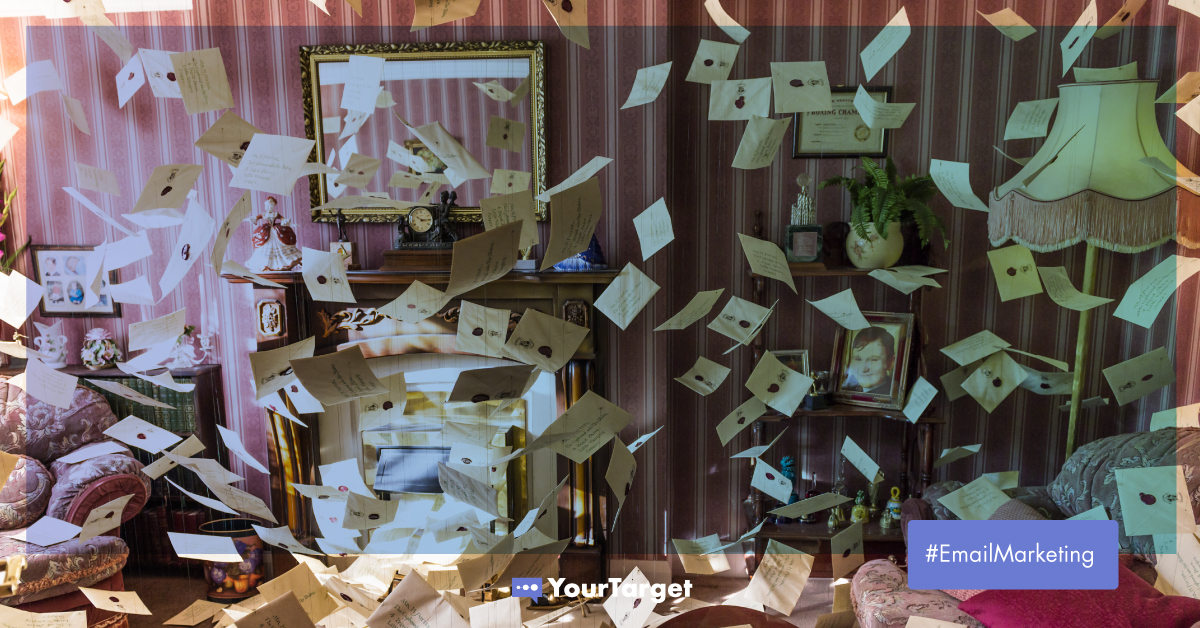If there’s one thing we’re sure of, it’s that email marketing certainly isn’t dead. Did you know that there are 3.9 billion daily email users worldwide? Moreover, this number is expected to climb to 4.3 billion by the year 2023. Email marketing isn’t a new concept. It’s been a valuable tool for small and large businesses since the first email marketing blast was sent in 1978.
An effective email marketing strategy will allow you to connect with your audience and build on your relationship with valuable, relevant email content. If you don’t want to end up getting sent straight to their spam folder, or worse, unsubscribed, your emails mustn’t get on your customers’ nerves.
In this article, we’ll tell you everything you need to know about email marketing and how to get started. We’ve got a lot to cover, so let’s dive right in.
How Does Email Marketing Work?
Email marketing refers to the process of sending subscribers and customers targeted and relevant information via email. The goal of email marketing is to give your audience something valuable and can help them to achieve their goals.
It requires customers’ consent to be sent emails, which is usually given through an opt-in form.
When done well, email marketing can help businesses to nurture customers, boost conversions, and achieve their goals.
Benefits of Email Marketing
There are plenty of benefits to email marketing. It’s one of the best and most cost-effective ways to reach out to existing customers and leads. Below are some of the main advantages of incorporating email into your marketing strategy.
- You can build strong customer relationships: Email is the most efficient way to reach all of your customers at once. By sharing valuable information will show them that you’re thinking of them. Product launches, special events, and any business news all make great topics to share with your valued subscribers.
- Improve brand recognition: Email gives you a direct line of contact with your customer. Sharing relevant and well-curated emails will give your brand a boost in the eyes of your audience.
- Share targeted and personalized content: With email, you can adapt campaigns to different audience segments. When you talk to your audience as people, not customers, you’ll build trust. More trust = longer-lasting relationships.
- Boost sales: 59% of people say that marketing emails influence their purchase decisions. Marketing emails encourage impulse buying while at the same time engaging the customer with your brand directly.
Creating an Email Marketing Strategy
Set your goals
Before you start sending out emails left, right, and center, come up with campaign goals that’ll help you to better structure and execute your efforts. Examples of email campaign objectives include:
- Boost brand visibility
- Increase sales
- Reach a wider audience
- Build long-lasting relationships with existing customers
- Increase website traffic
Creating goals and assigning specific email marketing metrics to measure them will give you a sense of direction, and ensures that you’re targeting your campaign goals aligned with your business objectives.
Once you’ve outlined some SMART goals, you can begin thinking about who you’re going to send your emails to.
Grow your email list
No email campaign is complete without a list of people to send them to. An email list refers to the people who have permitted you to send them valuable content via email. Building that list involves discovering ways to engage prospects and get them to opt into receiving your emails. So, how can you grow your email list?
You’ll need to attract your audience with a compelling offer. We live in a give and take world, so there needs to be an exchange of value when you’re relying on people giving you their personal information!
A lead magnet is something that you give to your audience members for free, in exchange for their email address. Often, lead magnets are digital materials like PDFs, audio files, or videos that require little to no cost to create. Some lead magnet examples include:
- eBooks
- White papers or case studies
- Checklists
- Webinars
- Free trials and samples
- Free consultation or quote for services
When it comes to creating lead magnets to hook your audience into your email list, consider that it should be easy to consume, actionable, valuable, and immediately available.
Segment your email list
When you’ve got your email list, it’s time to segment it. According to Campaign Monitor, marketers who used segmented campaigns noted as much as a 760% increase in revenue. Use parameters to define your buyer personas, and segment your campaign according to things like:
- Customer lifecycle stage
- Demographics: age, location, job, etc
- Buyer frequency
- User behavior and level of engagement
Doing this will help you to plan and organize your email marketing strategy more efficiently. You’ll be able to tailor your emails to cater to the needs of particular audience segments. This way, you can add some personalization to your emails and target your subscribers more effectively.
Decide what you’re going to write
Once you know who it is you’re writing to, you’ll need to think about what you’re going to write. It’s time to think about email content.
Your email campaigns should always have a purpose. After all, they signed up for a reason! Make sure you’re not wasting their time with irrelevant email content.
You might write to your audience about upcoming events, share details about upcoming products or sales, or share popular social media posts. It’s worth noting that 81% of B2B marketers say their most used form of content marketing is email newsletters, and 31% agreed it was the best way to nurture leads.

It can be tough to regularly come up with content to fill your email campaigns in mind, but here are a few tips to set you on the right track:
- Before you begin creating content from scratch, look at what you already have, and consider which segments of your audience might find it valuable.
- Show your audience they’re special by letting them be the first to know about new products, sales, and events.
- Keep it simple and relevant. Be sure that you’re sending subscribers information that’s valuable to them. This goes for the body of your email, as well as the subject line.
- Show your brand’s personality through a unique tone of voice. Customers are more likely to purchase from brands that they trust, and what better way to build trust than to be real with your audience?
Create a schedule
It’s important to create a schedule for sending out email marketing campaigns. You don’t want to send emails too often only to see your efforts go straight to the spam folder. On the other hand, you don’t want to email so infrequently that the recipients barely register your existence. There’s a sweet spot to be found, you just have to find it.
Depending on the product or service you’re offering, you might want to send daily, weekly, or monthly updates to your subscribers. There’s no ideal schedule for sending out emails, but we recommend sending an email once a month at least to keep your audience engaged and ensure you stay on their radar. It’s interesting to note that 35% of marketers send their customers emails 3-5 times per week.
A great way to schedule your email marketing campaign efforts is to plan with an editorial calendar. This allows you to schedule your email marketing campaigns, social media posts, blog posts, and more.
An editorial calendar allows you to stay on top of events, holidays, and other special occasions and plan accordingly. For example, you might want to schedule a few more emails in the month leading up to Christmas to stay current.
Optimize your emails for mobile
This step is really important.
Mobile accounts for 46% of email opens. You’ll need to ensure your email marketing campaigns are optimized for mobile to avoid people seeing oversized images, or blocks of text that barely fit on their mobile screens. Here are some tips for optimizing your emails for mobile:
- Avoid embedding large images into emails
- Use short paragraphs to break up the text
- Use responsive email templates
- Preview your emails on mobile before sending them out to your subscribers
Doing this will ensure your subscribers have a positive experience with your email, whether they open it in the office or on-the-go.
Measure your efforts
You already knew this one was coming, right? Marketers measure everything, so it should come as no surprise that you’ll have to measure your email marketing results too! An email marketing tool like this one from Hubspot features built-in analytics to make measuring and tracking your efforts a breeze.
You can also do A/B testing to gauge the success of your campaigns and gain valuable insights to optimize your strategy. With A/B testing, prepare different email templates so you can test out different versions of subject lines, designs, and content to see which ones perform the best.
Final Thoughts
There are many best practices you can follow when it comes to creating your email marketing strategy. So many, in fact, that it can quickly become overwhelming. The most important thing to remember is to treat your subscribers like humans.
If you’re ready to get started organizing and scheduling your email marketing campaigns,
we’ve got a little something to nudge you in the right direction.
Download our editorial calendar and start sending those emails!

